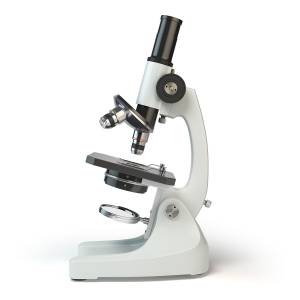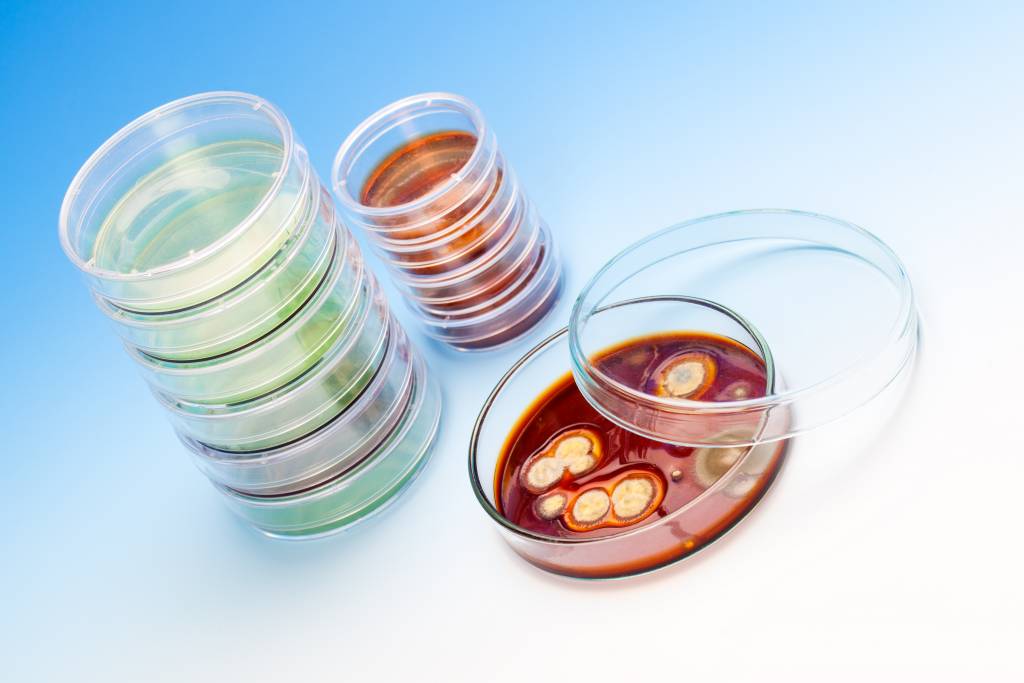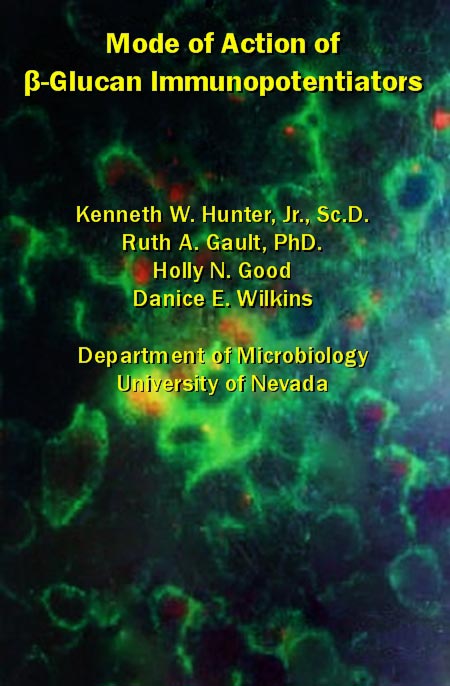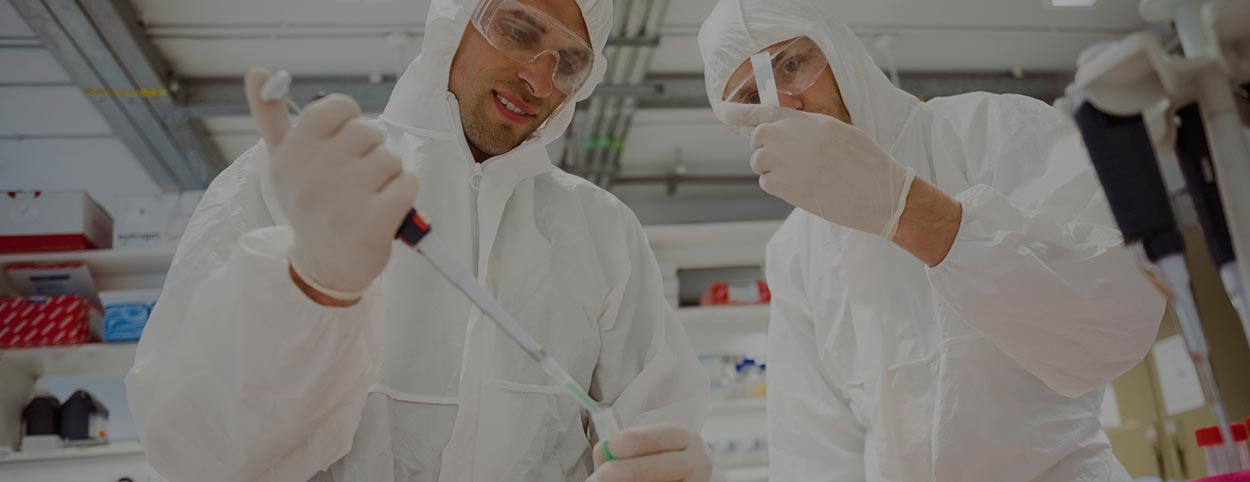Introduction to Beta Glucan Research

Beta glucan is a scientifically proven biological response modifier (BRM) that nutritionally potentiates, modulates and helps normalize the immune response. As a supplement, after swallowing orally, Beta 1,3/1,6 glucan is ingested while performing primarily through macrophage and dendritic immune cells, including Dectin-1 receptors, to nutritionally, according to research, enhance immune cell pathogenic defenses.
For many years Glucans have been investigated (History) for these immune enhancing properties, particularly their ability to activate macrophage immune cells and NK-Cells, plus in turn, the T-Cells, and B-Cells including selected cytokines and complement.
Poly-branched B-1,3-(D)-Glucans are naturally occurring polysaccharides, with or without B-1,6-(D)-glucose side chains, that are integral cell wall constituents in a variety of bacteria, plants and fungi. Glucan receptors to deliver non-self derived glucan to the immune response have been identified on macrophages, dendritic cells and other cells. The Beta-1,3-(D)-glucan with Beta- 1,6-glucan linkage extracted from yeast cell wall (Saccharomyces cerevisiae) has been shown to act as a potent non-specific immune-activator.
The scientific literature on glucans is voluminous over many decades, and there is also a considerable body of patent literature. This Index is not intended to be a complete compilation of all beta glucan research, but rather is keyed by health condition, research topic or contribution and targeted to research on yeast-cell-wall-derived Beta- 1/3,1/6-glucan.
This indexing format varies from standard research classified by “researcher(s)” to make finding applicable research to a specific health condition easier for both the scientific and nonscientific user. As a note, particulate insoluble beta glucan is the glucan form in nutritional dietary supplements, while soluble glucans are primarily utilized in pharmaceutical applications. Particulates are not generally considered safe as injectables.
The Key Determinants in Beta Glucan Effectiveness
Neither the volume nor weight of beta glucan determines effectiveness or optimum dosage, but rather the key determinant is the degree of activation of the immune response by any given glucan in a specific amount, determined by an acceptable scientific method. In other words, more is not always better – judge by the extent to which the amount of beta glucan in a product enhances the immune response and not by the quantity of any given beta glucan in a capsule.
High milligram dosages and high percentages of beta glucan in a capsule are not determinants of immune response or ingredient purity and cell activation. The true determinants of immune response activation and effectiveness are beta glucan source, processing (including avoidance of reaggregation or agglomeration during digestion), sizing and uniformity of beta glucan particles ingested.
Several prior beta glucan studies used larger volumes of beta glucan than found in current effective oral beta glucan nutritional supplements, but these were not experiments designed to determine optimum dosage relative to the immune potentiation capabilities of a specific glucan and most were performed in the 1970’s and 1980’s.
Current science has demonstrated 10 mg or less of a properly processed and high quality Beta- 1,3/1,6-glucan or Beta-1,3-(D)-glucan with Beta- 1,6-glucan linkage extracted and isolated from yeast cell wall is an effective dosage amount (see “Dosage”) with dosages above 100 mg of a quality processed glucan potentially diminishing in immunopotentiality with increased amounts.

Lower quality, or glucans that reaggregate in the digestive process to non-uniform globular size, usually are sold in high milligram amounts that, without adequate immunopotentiation capability proven by independent laboratory testing, are minimally effective. While generally inexpensive, these high milligram content capsules are inexpensive due to limited processing to minimize detriments to beta glucan immunopotentiation and minimal if any efforts to reduce particle size to uniform micro-nano particulate sizes of 1-4 microns (micrometers) equal to 1,000-4,000 nanometers. As a note, macrophage immune cells are generally 8-21 microns (micrometers) in diameter.
Bigger and heavier are not necessarily positive characteristics of Beta glucans and can indicate lower grade Beta glucans only minimally effective in immune response activation. Lower grade Beta glucans must be provided in higher milligram amounts to be measurably effective in immune response activation.
Current marketing often hypes high milligram content or percentage of a capsule containing any grade or quality Beta glucan, but sound science judges and measures safety and immune potentiation by the positive immune reaction created by the amount of Beta glucan actually contained; i.e. a small amount of high grade Beta glucan initiating a potent immune response in a capsule is many times as effective in immune potentiation as a high volume of inferior Beta glucan, irregardless of weight or size, with minimal if any immune potentiation capabilities.
Additionally, current research has conclusively demonstrated particulate beta glucan from yeast cell wall even when micronized to 1-4 microns, or 1,000-4,000 nanometers prior to oral ingestion, reaggregates or clumps back together when subjected to water in the digestive process, yielding an aggregated group that collectively creates a larger size glucan effective particle size for internalization by the immune cells, similar to grapes in a bunch. [See “beta glucan phagocytosis” and “microparticulate” categories for research]
Ingestion is optimized by beta 1,3/1,6 glucans that are specially processed to prevent reaggregation that in turn yields enhanced internalization and nutritional potentiation of the targeted immune cells, normally the macrophage immune cells. The immune response with non-reaggregated glucan particles ingested by macrophage or dendritic cells responds faster and in greater numbers to attack non-self in the form of pathogens and preferably in microparticulate form.
In immunotherapy research, MG Beta 1,3/1,6 glucan is recognized as a cell-based activation agent and works by amplifying the immune response of Immune effector cells such as macrophages, dendritic cells, natural killer cells and cytotoxic T-cells. Immune effector cells work together to defend the body against cancer by targeting abnormal antigens expressed on the surface of tumor cells and to recognize, respond, kill and remove other pathogens .
Valid Test for Effectiveness and Digestion Impact on Glucan Potentiation
A common test to determine a glucan’s immune response potentiation effectiveness is the measure of the degree to which a glucan increases the nitric oxide burst in the macrophage immune cell. Particle size and uniformity of same have additionally been scientifically proven to be important factors in nutritional potentiation of the immune response with microparticulates of 1-4 microns optimum, and for this reason “particle size” has been included as a research category below for review. Macrophages are generally approximately 10-21 microns in diameter.
Be sure in evaluating comparisons of glucans to confirm the compared glucans are both in the form delivered to the immune cells (macrophages) after being subjected to the digestive process, including acid, enzymes and water.
Most glucans, even if processed to reduce particle size, reaggregate or clump like grape clusters after being subjected to water in the digestive process and again become globular in characteristics, which minimizes ingestion and internalization by immune cells and immune response potentiation/normalization. (The Presentation Cover photo shows internalized MG Glucan as orange in macrophage cells)
Being a small particle glucan when swallowed is a positive step, but the critical determinant is being an extremely small microparticulate of 1-4 microns after going through the digestive process and then being delivered to the Peyer’s patch in the lymphatic system to effectively activate a beta glucan receptor (Dectin 1 or TLR) on a macrophage or dendritic cell to potentiate and enhance the immune response in a superior manner.
Certificates of Analysis, Labeling
A certificate of analysis for a specific beta glucan or beta glucan product should be from a recognized independent GMP laboratory and not the manufacturer or distributor (conflict of interest), with clear delineation of specific tests and/or specifications for each category accepted and approved as industry standards.
Is the product a private branded product provided the reseller by another manufacturer, or is the product from the original manufacturer? Is the entity selling the product actively involved in any medical school research related to the product in the bottle? “No” to the first question and “yes” to the second indicate a preferable beta glucan product from a primary source involved in scientific studies to study and improve glucans. Acquiring intellectual property can be beneficial, but actively creating science in on-going programs to produce intellectual property and glucan improvements with new understanding is far preferable in product manufacturer activities.
Be on alert if tests, graphs and results do not include immune potentiation capabilities, particle size and ability to negate reaggregation in the digestive process, but rather disclose or compare only glucan volume in milligrams in the product and capsule ingredients. Product dollar cost per milligram of glucan also has nothing to do with immune potentiation capabilities of a specific product or glucan and may represent only an inexpensive, poorly manufactured or processed glucan, compared to a justifiably more expensive premium beta glucan product processed to higher standards. While everyone seeks a bargain, health is not an area to seek a minimal price at the cost of quality and effectiveness.
Be sure labeling is also in compliance with FTC and other government regulations, which are specific in format and content. Dietary supplement and food labeling requirements differ, although some manufacturers seem to confuse the two by placing, as an example, fat, caloric and carbohydrate information unnecessarily on supplements. There is no detriment to inclusion of such information; however, same is not required nor is associated with labeling of major supplement manufacturers.

Validate Health Claims, Product Compositions and Credentials of Researchers and Spokespersons - Know the Quality of the Product and those Producing and Marketing a Beta Glucan Product
Be aware and suspicious of broad health claims in supplements unsubstantiated by science and cautiously evaluate scientific research on glucan compositions that differ substantially from the product being sold (examples: insoluble-particulate glucans research to support soluble glucan, or yeast beta glucan (Beta-1,3-(D) or Beta-1,3/1,6) studies to support oat and barley derived glucan (beta 1,4) immune potentiation capabilities and vice versa). Obviously, avoid resellers who are not aware there are differences in glucans or those who do which only seek to sensationalize by inappropriate marketing.
Do not be shy when your health or the health of your patients or customers is involved and demand complete information on the product and the parties involved to make informed decisions. Be informed to determine appropriate applications, premium beta glucan products and how to differentiate the effective from the promoted.
Remember individual products containing Beta glucan can (1) range widely in forms of Beta glucan chemically and structurally; (2) range widely in processing procedures from unique U.S. Patents to none when private labeling; (3) range widely in quality of the processed Beta glucan due to source, processing and microbial testing during preparation and (4) be subject to various levels of honesty in immune normalization and potentiation capabilities of an individual product, including outright and purposeful misrepresentations in marketing utilizing performance criteria such as weight and volume in a capsule, known to have no meaningful relationship to an ingredients ability to normalize, potentiate or modulate the immune response nutritionally.
Beta Glucan, particularly Beta- 1,3/1,6 Glucan extracted from yeast cell wall, is a potent and proven immune response potentiator and modulator when processed and distributed in a reputable and scientifically proven composition in the proper dosage. Beta- 1,3/1,6 Glucan extracted from yeast cell wall also has excellent potential to be a major contributor to the now prevalent immunotherapy research focusing on cancer. The research recorded on this non-commercial website, with constant additions and updates on publication, is a first step in understanding this complex and nutritionally beneficial natural substance – Beta glucan.
Research Overview
The Beta Glucan Research Organization is not a commercial marketing entity and has no products of any kind. References and quotes contained herein are for information, education and research purposes only and should not be construed as express or implied representations, endorsements or warranties of The Beta Glucan Research Organization.
Note on various Glucan forms: No commercial brand names of products are presented or endorsed on this research website. Beta 1,3/1,6-D glucan is a baker’s yeast-derived beta glucan isolate with a Beta 1,6 linkage (4-8%) and the molecule skewed to the right. MG Glucan is a microparticulate Beta 1,3/1,6 glucan that is primarily uniform homogeneous and non-aggregated Beta 1,3-D glucan that does not significantly reaggregate after the digestive process. “PGG-glucan” is poly-[1,6]-B-D-glucopyranosyl-[1-3]-B-D-glucopyranose (b-1,6/1,3-glucan). Intravesical bacillus Calmette-Guerin is abbreviated as BCG.
“Beta glucans” refers generally, but not always, to Beta- 1,3/1,6-glucan. “Scleroglucan” and “PSAT” are two Beta-1,3/1,6-polysaccharides. Beta glucans are derived primarily from yeast cell wall, various fungi, grains, and mushrooms. Beta 1,4 glucan is derived from oats and barley while not included in this research summary of forms of Beta 1,3/1,6 glucan. Many beta glucans are marketed under various trademark names that are not unique ingredient formulations. Letters such as NSC, WGP and others are associated with brand names and are not specific forms of Beta glucan, although the individual products often contain Beta glucan.
The beta 1,3/1,6 glucan used in various research presented is from multiple sources in various amounts; none determined nor controlled by this website. Check the full research to see sources and amounts used in a specific study. PubMed IDs are presented for most research. No commercial products are presented herein and no claims are made by this non-commercial website regarding any commercial products containing beta 1,3/1,6 glucan or endorsement of the research by various entities herein

